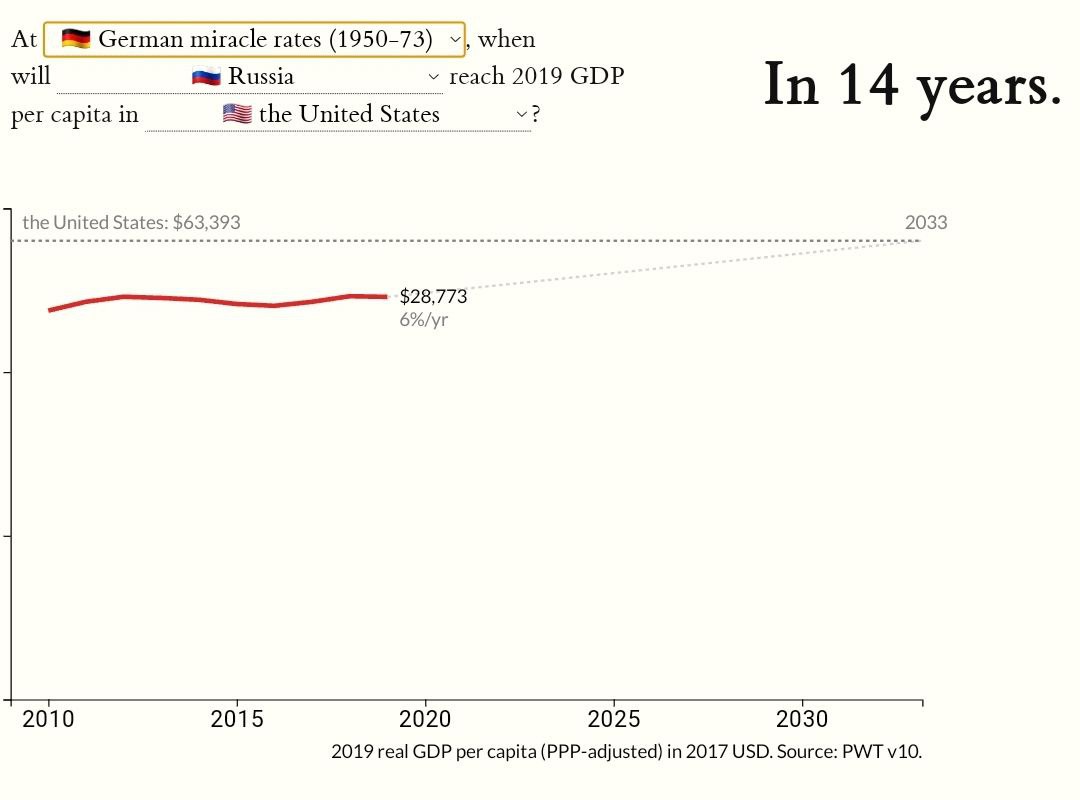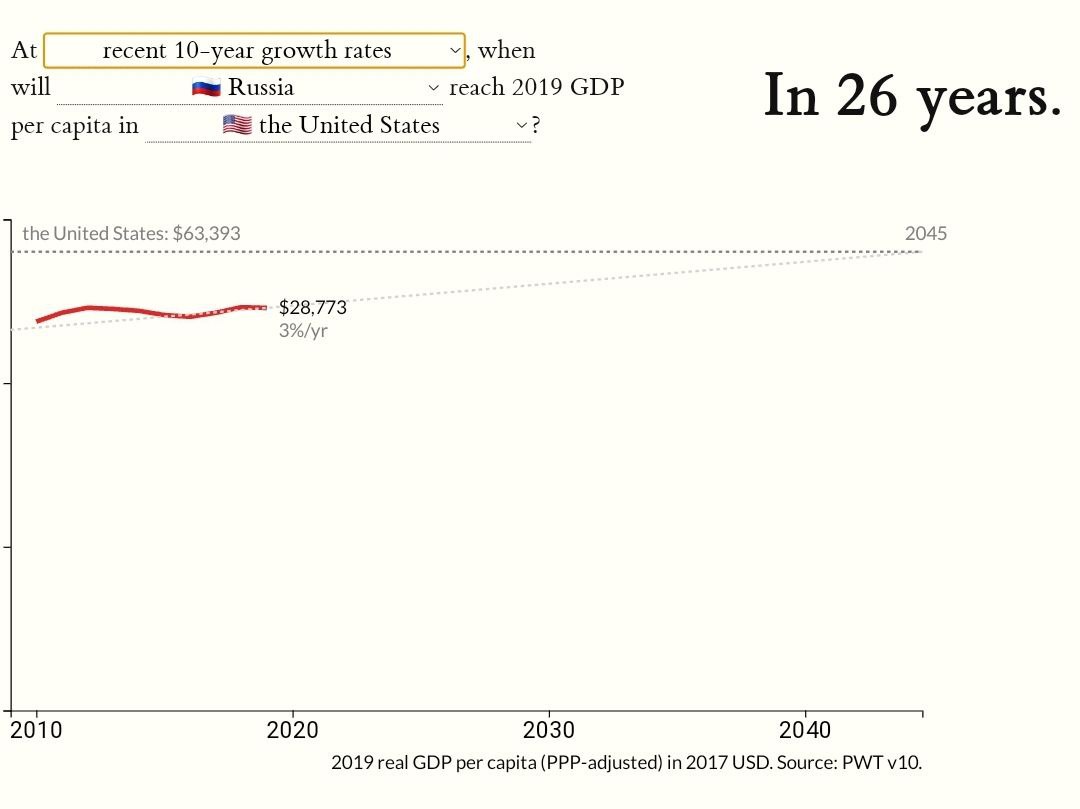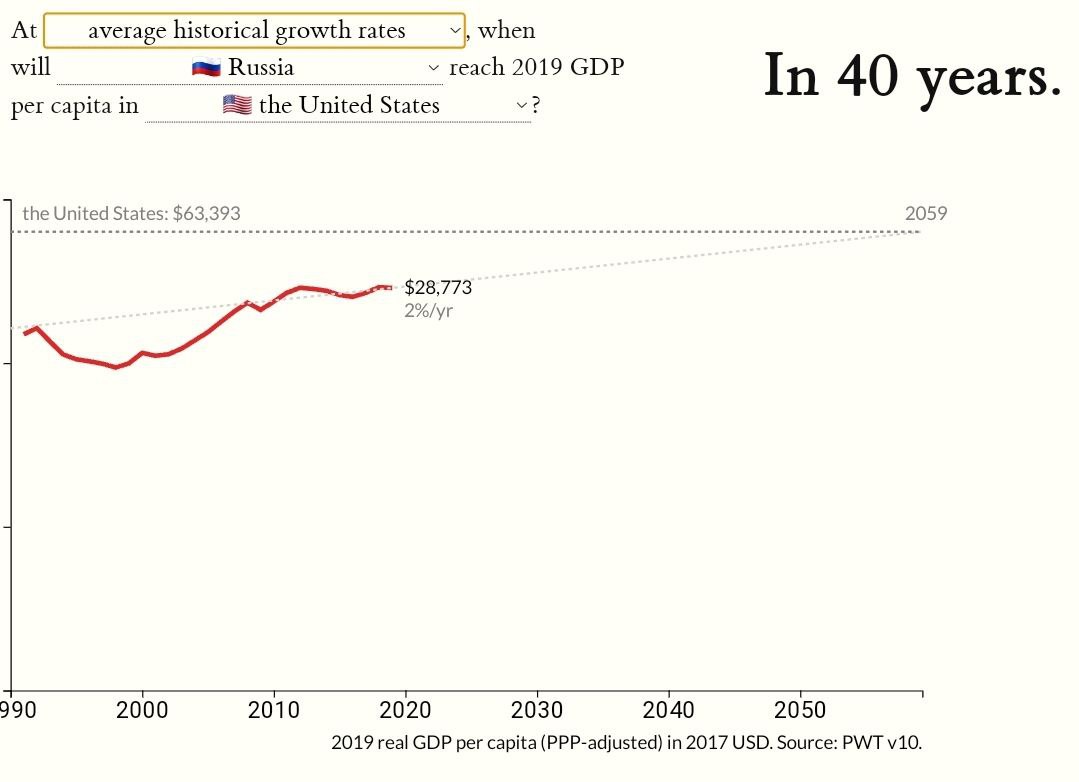Why do I always say that the problem is not so much in the fall as in the lack of prospects for long-term growth?
Why do I always say that the problem is not so much in the fall as in the lack of prospects for long-term growth?
Look, the average real GDP growth rate in Russia in the period from 2016 to 2019 was in the region of 1.2% per year. Let's imagine that the Russian economy will fall for 2 years and the total fall will be 15%. Further, the economy grows at an average of 1.5% per year (which is very optimistic).
It will take about 10 years to catch up with 2021 levels.
If such a drop were not associated with the economic blockade, and the prospects for long-term growth improved, and we grew at least by 3% per year (which is also not much for an economy of our level of development), the problem would be solved in 6 years. 4% - a little over 4 years. 5% - a little more than 3.
A little more about economic growth and its significance.
Imagine we are in 2019. Per capita GDP at PPP is almost $29,000. The figures show how many years it would take at different growth rates to catch up with 2019 US PPP per capita GDP.
10 years at an average rate of 8% per year.
12 years at 7%.
14 years at 6%.
26 years at 3%.
40 years at 2%.
With a fall of 15% and a growth rate of 1.5% per year - 64 years.
You can play with other countries here[1]
Grigory Bazhenov 2022-03-29
- ↑ The-Mountain-To-Climb Oliver W. Kim





